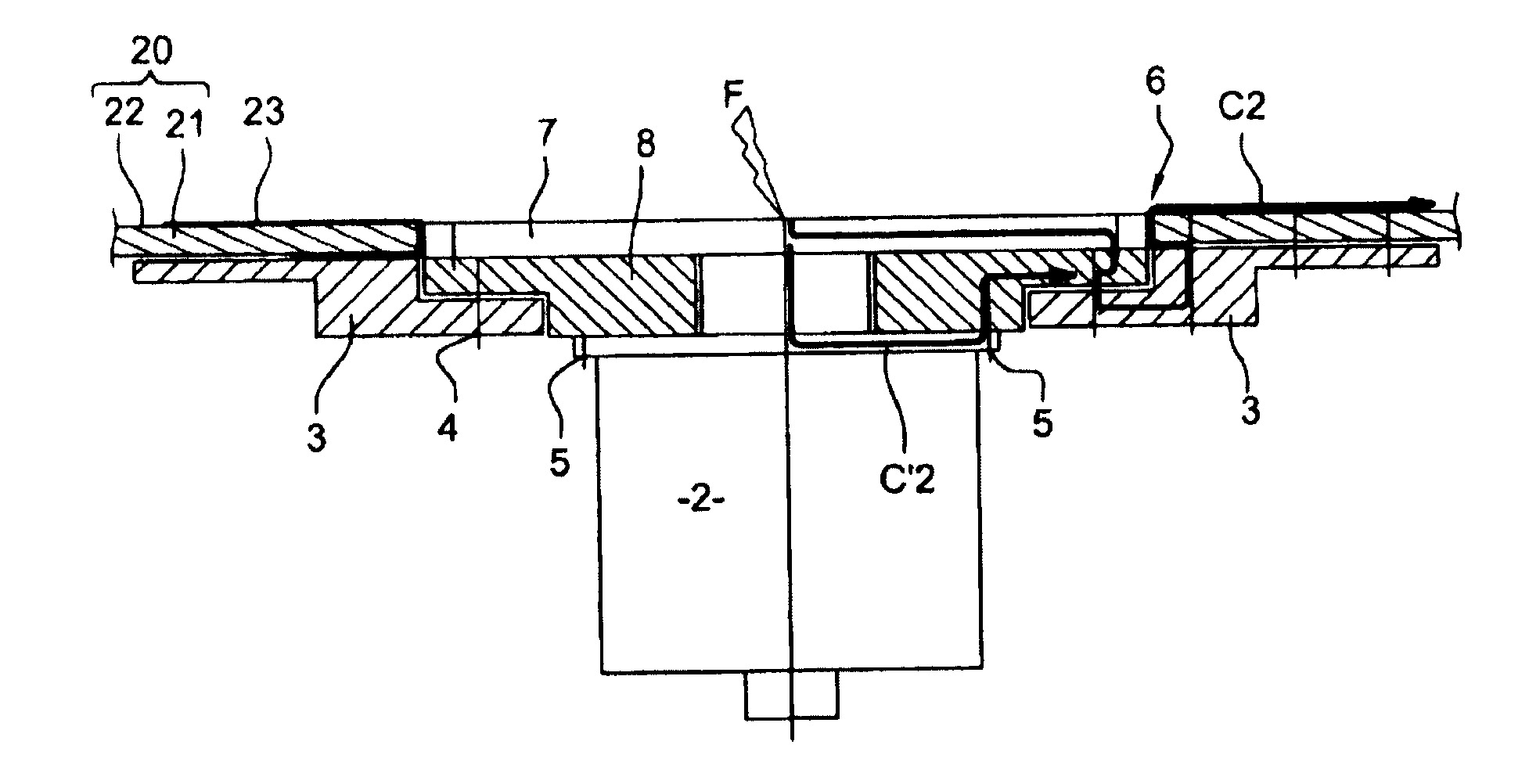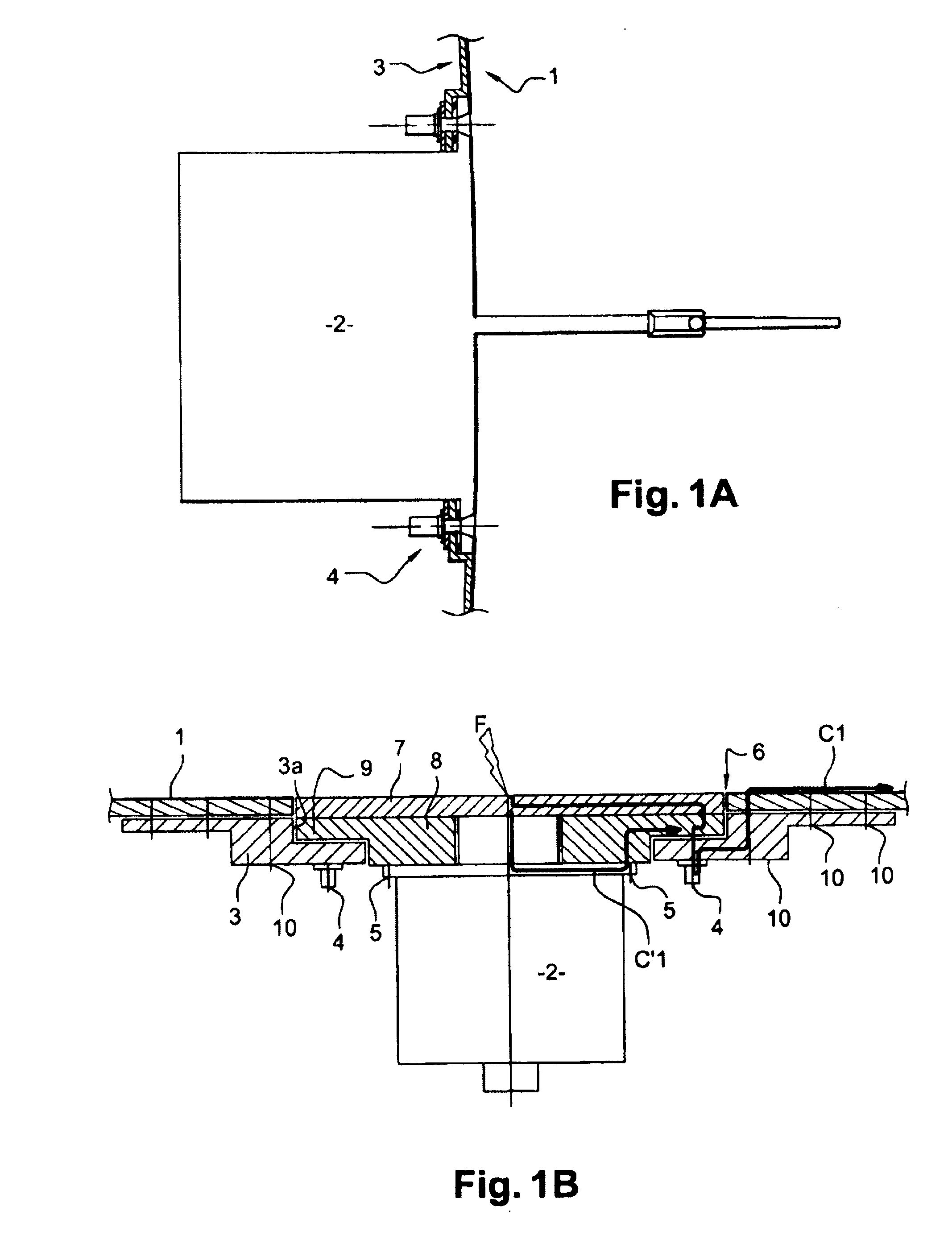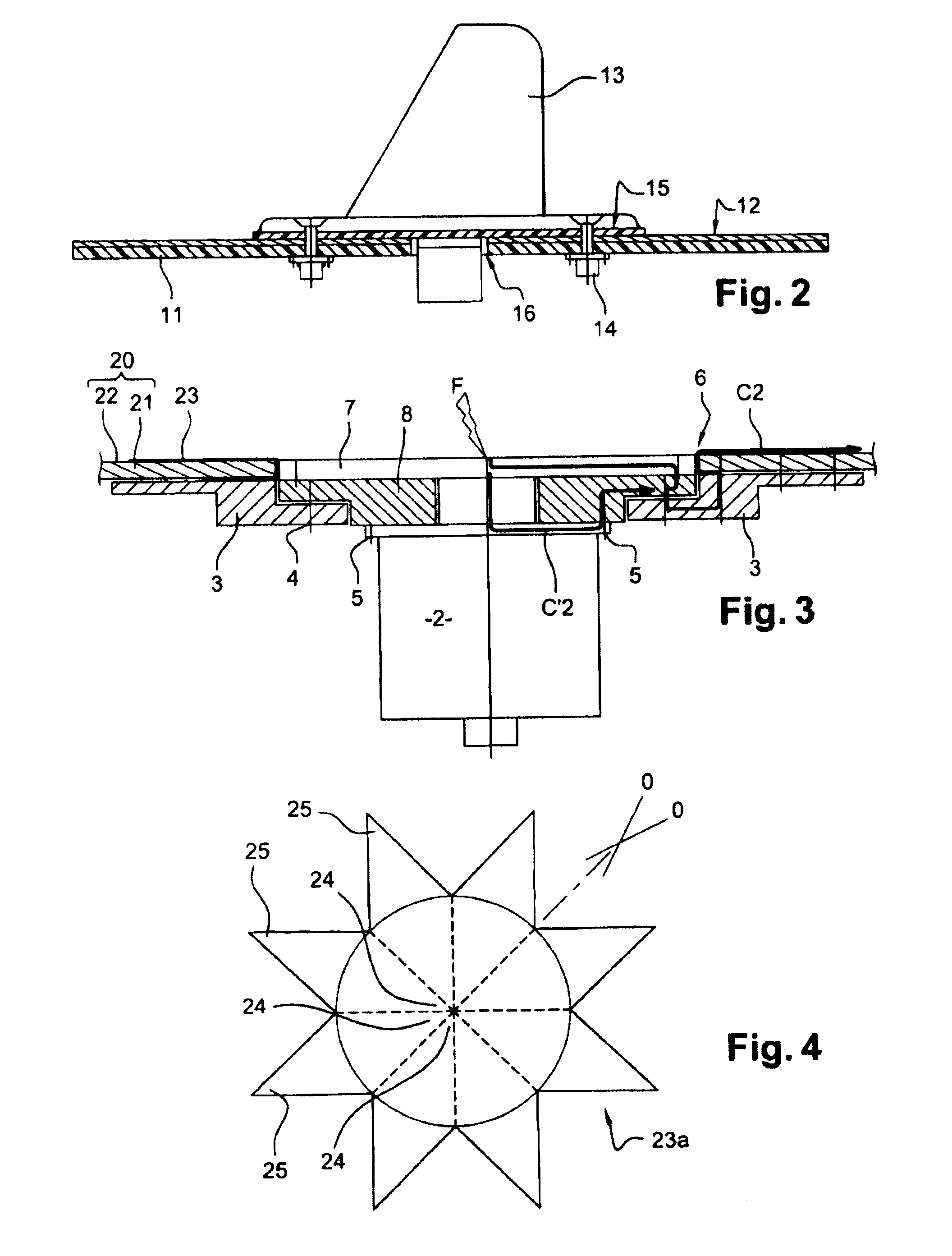System for dissipating a lightning current generated by a thunderstorm discharge on an aircraft
a technology of thunderstorm discharge and lightning current, which is applied in the direction of aircraft lighting protectors, emergency protective arrangement details, and arrangements responsive to excess voltage, etc., can solve the problem that the principle of metalization of avionic equipment items on a metal skin cannot be applied to an airplane made of composite materials, and the aircraft structure is heavy. problem, to achieve the effect of dissipating the electric curren
- Summary
- Abstract
- Description
- Claims
- Application Information
AI Technical Summary
Benefits of technology
Problems solved by technology
Method used
Image
Examples
first embodiment
[0064]To produce the dissipating system according to this first embodiment, airplane-skin 20 made of composite materials according to standard techniques is drilled with an orifice 6 in order to allow passage of sensor 2. A pre-impregnated expanded metal plate is positioned around orifice 6 then applied on the walls of the said orifice then underneath the orifice. In this way the expanded metal plate covers the outside surface of the airplane-skin and its inside surface. A heating mat brought to approximately 180° C. then is installed on this expanded metal plate to ensure polymerization thereof.
[0065]In more detailed manner, a sanding operation may be performed prior to installing expanded metal plate 23, so as to achieve the metal mesh of the layer of expanded metal 22.
[0066]In this way expanded metal plate 23 is in surface contact with the layer of expanded metal 22 of the airplane skin. Expanded metal plate 23 also is in surface contact, inside the aircraft, with doubler 3.
[0067...
second embodiment
[0083]In the invention, the metal plate is made of an expanded metal ring and a ring-shaped plate made of titanium or copper. An example of this embodiment is shown on FIG. 6.
[0084]As in the first embodiment, airplane-skin 20 first is manufactured, then drilled with an orifice 6.
[0085]In this second embodiment, an expanded metal ring 30, pre-impregnated, then is installed around orifice 6, on the outside surface of airplane-skin 20. A heating mat then is placed on this ring 30 to ensure its polymerization.
[0086]A ring-shaped plate 31, made of titanium or of copper, then is placed in contact with expanded metal ring 30. The embodiment with a plate made of titanium will be described subsequently, its being understood that plate 31 also may be made of copper. This titanium plate 31 is installed above the central section of expanded metal ring 30. An exemplary assembly of the metal plate according to this second embodiment is shown on FIG. 7. This assembly comprises a first ring 30 made...
third embodiment
[0094]In the dissipating system of the invention, the metal plate is cast with the airplane-skin. This embodiment is shown on FIGS. 8 and 9. In this embodiment, airplane-skin 20 is not drilled in its thickness. The joggle of the skin provided for accommodating the ring-shaped plate made of titanium is implemented during the laying of the airplane-skin in the production mold. The tool then is a female mold.
[0095]As shown on FIG. 8, a ring-shaped plate made of titanium 34 is positioned around orifice 6, directly in airplane-skin 20. This plate made of titanium 34 was cast beforehand with airplane-skin 20 so that the airplane skin has a form adapted to the contour of the plate made of titanium 34.
[0096]An exemplary female mold in which the airplane-skin may be produced has been shown on FIG. 9A. This female mold incorporates the plate made of titanium 34. Once the plate made of titanium has been positioned in mold 35, the carbon folds are positioned inside the mold so that these carbon...
PUM
 Login to View More
Login to View More Abstract
Description
Claims
Application Information
 Login to View More
Login to View More - R&D
- Intellectual Property
- Life Sciences
- Materials
- Tech Scout
- Unparalleled Data Quality
- Higher Quality Content
- 60% Fewer Hallucinations
Browse by: Latest US Patents, China's latest patents, Technical Efficacy Thesaurus, Application Domain, Technology Topic, Popular Technical Reports.
© 2025 PatSnap. All rights reserved.Legal|Privacy policy|Modern Slavery Act Transparency Statement|Sitemap|About US| Contact US: help@patsnap.com



